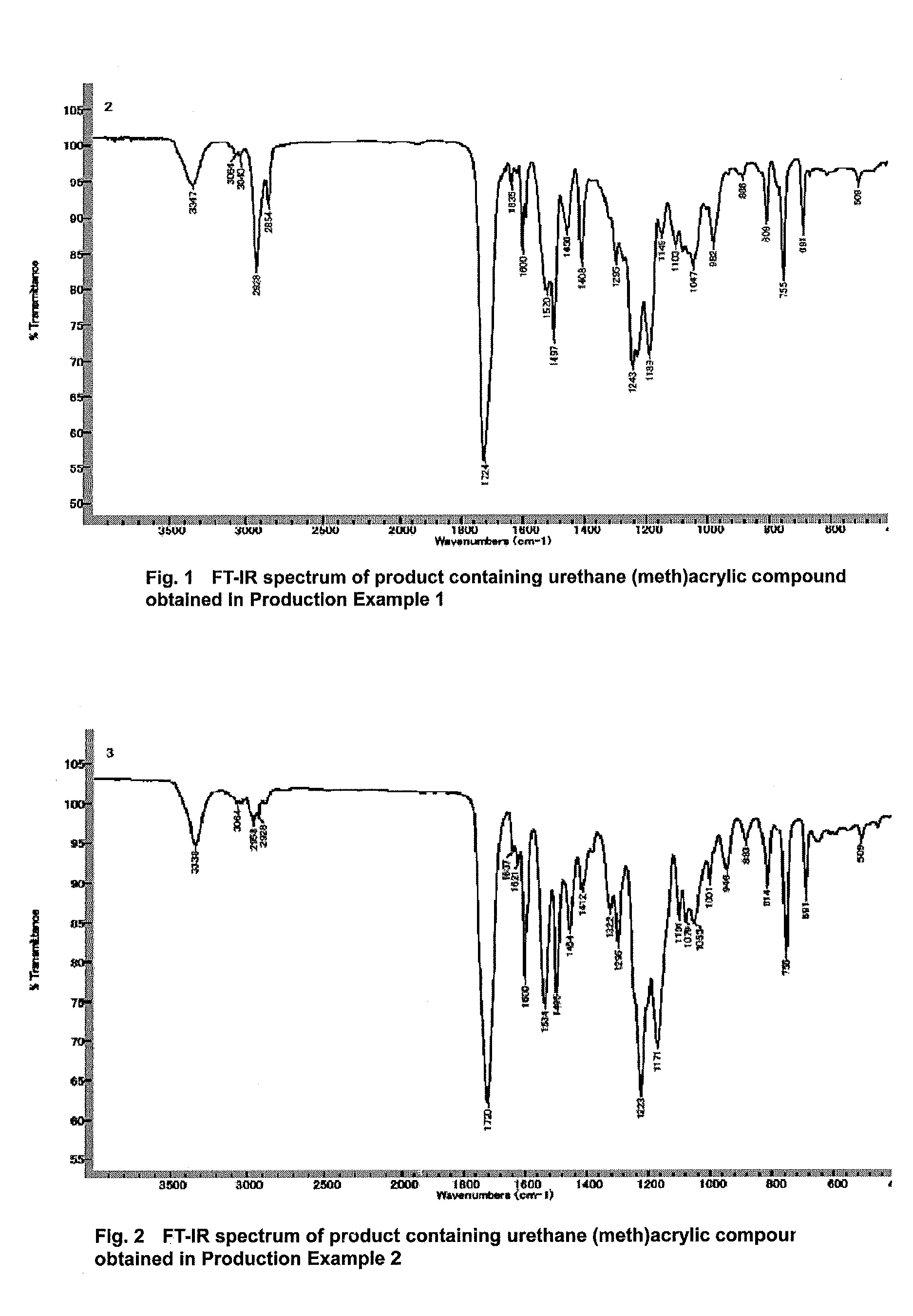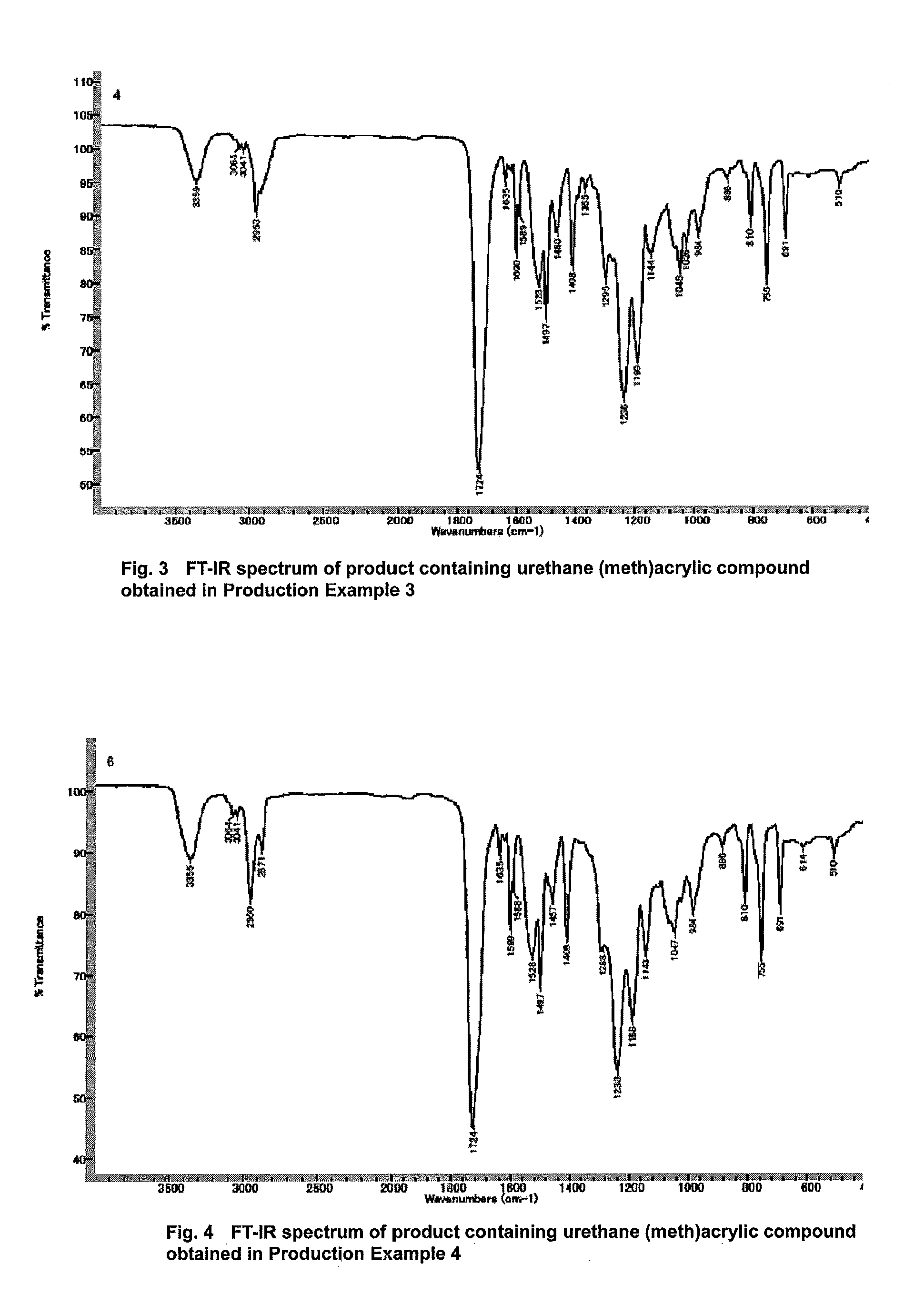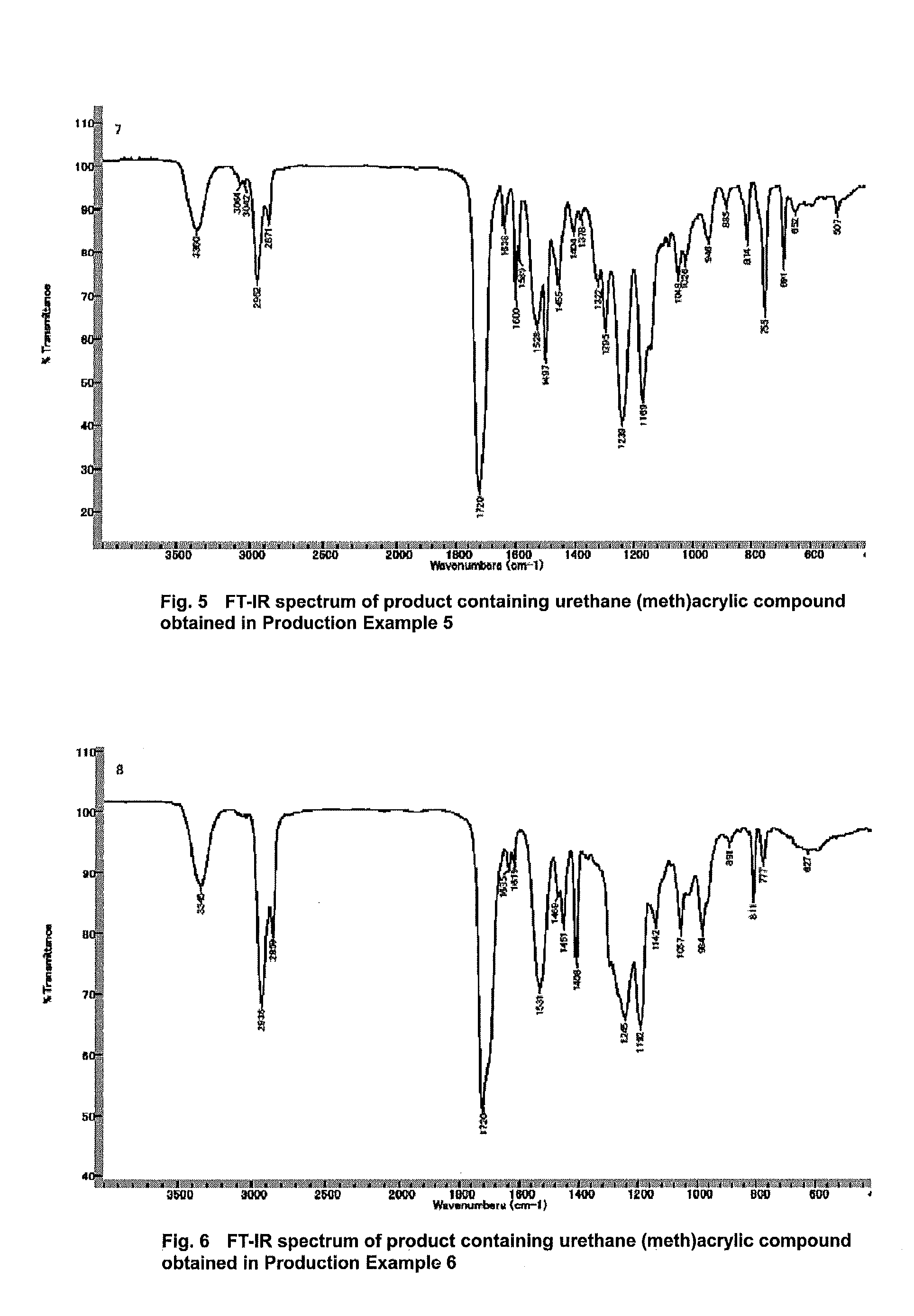Compound, composition comprising the compound and cured product
a compound and composition technology, applied in the field of compounds, can solve the problems of special primers, reduced shrinkage, and difficulty in forming, and achieve the effects of low polymerization shrinkage, excellent mechanical strength, and good abrasion resistan
- Summary
- Abstract
- Description
- Claims
- Application Information
AI Technical Summary
Benefits of technology
Problems solved by technology
Method used
Image
Examples
production example 1
[0208]A 300 ml-volume, four-necked flask equipped with a stirring blade, a thermometer and a reflux condenser was charged with 111.1 g (0.5 mol) of 3-phenoxy-2-hydroxy acrylate and 0.11 g of dibutyl tin dilaurate (1000 ppm with respect to the weight of the hydroxyl group-containing (meth)acrylic compound). The temperature was raised to 60° C. Subsequently, 65.6 g (0.25 mol) of bis-isocyanatocyclohexyl methane (hydrogenated MDI) was added dropwise over a period of 0.5 hour, resulting in an increase in reaction temperature to 80° C. After the completion of the dropwise addition, the reaction was carried out for 10 hours while controlling the reaction temperature in the range of 80 to 90° C. The percent by weight of the hydrogenated MDI in the reaction product was determined to be 0.00% by weight.
[0209]The product was discharged from the reactor. Thus, 170 g of a product which contained a urethane(meth)acrylic compound represented by the following formula was obtained.
[0210]
production examples 2 to 14
[0211]Products containing various urethane(meth)acrylic compounds were obtained by the same synthetic procedures as those in Production Example 1, except that the 3-phenoxy-2-hydroxy acrylate and the hydrogenated MDI described in Production Example 1 were replaced by a hydroxyl group-containing (meth)acrylic compound and a diisocyanate illustrated in Table 11.
[0212]
TABLE 11OH-containingProd.(meth) acrylEx.compoundDiisocyanate234567891011121314Prod.Ex.Structural formula234567891011121314
production example 15
[0213]A 300 ml-volume, four-necked flask equipped with a stirring blade, a thermometer and a reflux condenser was charged with 14.4 g (0.2 mol) of acrylic acid and 0.5 g (1.7 mmol) of tetrabutylammonium bromide serving as a catalyst. The temperature was then raised to 60° C. Subsequently, 55.3 g (0.2 mol) of 4-nonylphenyl glycidyl ether was added dropwise over a period of 0.7 hour, resulting in an increase in reaction temperature to 65° C. After the completion of the dropwise addition, the reaction was carried out for 12 hours while controlling the reaction temperature in the range of 90 to 100° C. After the completion of the reaction, the reaction liquid was cooled to room temperature, and 200 ml of toluene was added thereto. The resultant toluene solution was poured into a 500 ml-volume separatory funnel and was washed with distilled water until the pH of the aqueous layer became neutral. After the washing with water, the toluene phase was distilled using an evaporator in order to...
PUM
| Property | Measurement | Unit |
|---|---|---|
| temperature | aaaaa | aaaaa |
| temperature | aaaaa | aaaaa |
| temperature | aaaaa | aaaaa |
Abstract
Description
Claims
Application Information
 Login to View More
Login to View More - R&D
- Intellectual Property
- Life Sciences
- Materials
- Tech Scout
- Unparalleled Data Quality
- Higher Quality Content
- 60% Fewer Hallucinations
Browse by: Latest US Patents, China's latest patents, Technical Efficacy Thesaurus, Application Domain, Technology Topic, Popular Technical Reports.
© 2025 PatSnap. All rights reserved.Legal|Privacy policy|Modern Slavery Act Transparency Statement|Sitemap|About US| Contact US: help@patsnap.com



